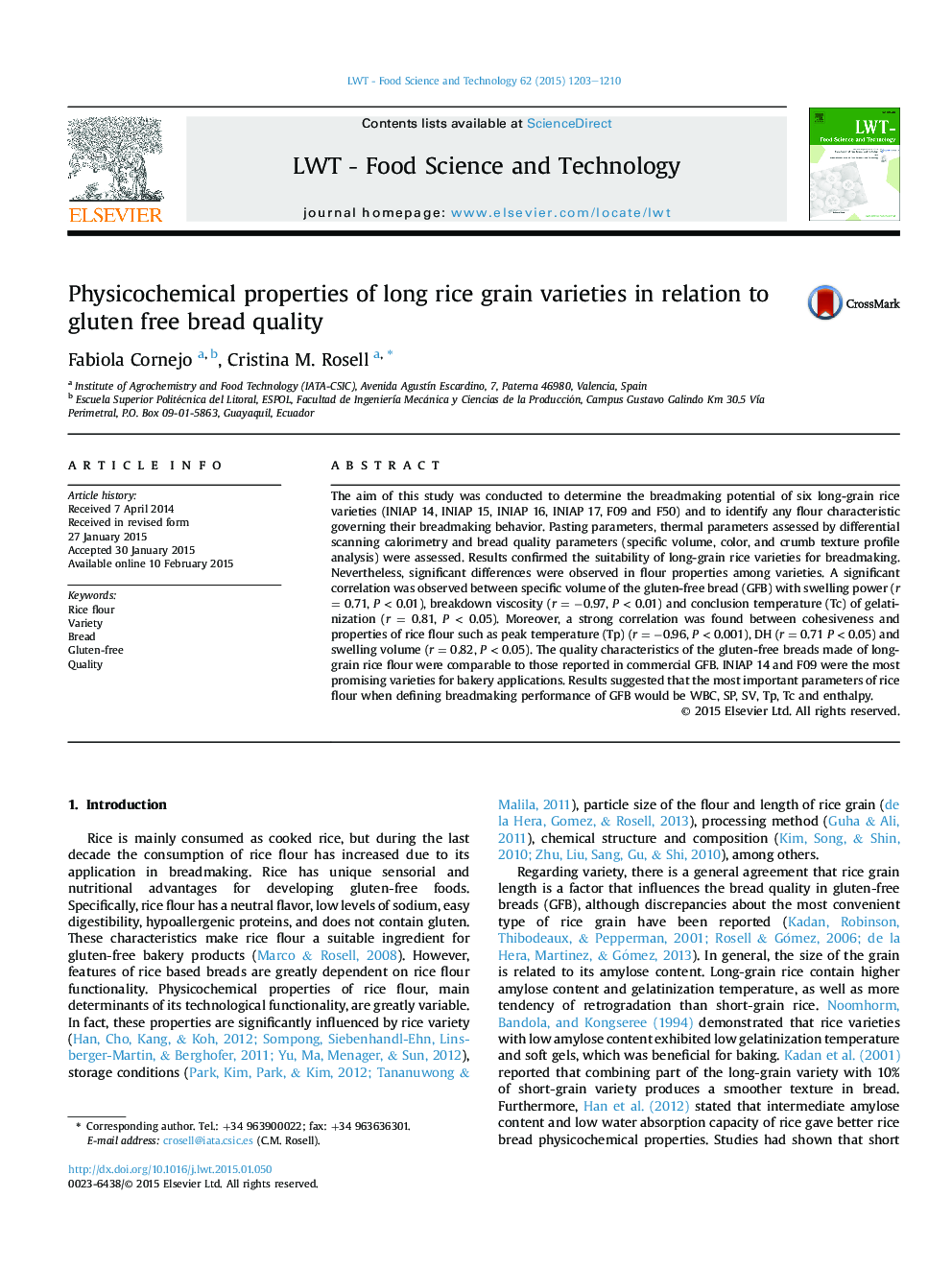| Article ID | Journal | Published Year | Pages | File Type |
|---|---|---|---|---|
| 6400672 | LWT - Food Science and Technology | 2015 | 8 Pages |
â¢Breadmaking potential of rice flour from long rice grain was determined.â¢Hydration and pasting properties of six varieties are presented.â¢Flour from long rice varieties are suitable for breadmaking.â¢Specific volume correlates with swelling power, breakdown, conclusion temperature.â¢Length of the rice grain is not a determining factor for breadmaking.
The aim of this study was conducted to determine the breadmaking potential of six long-grain rice varieties (INIAP 14, INIAP 15, INIAP 16, INIAP 17, F09 and F50) and to identify any flour characteristic governing their breadmaking behavior. Pasting parameters, thermal parameters assessed by differential scanning calorimetry and bread quality parameters (specific volume, color, and crumb texture profile analysis) were assessed. Results confirmed the suitability of long-grain rice varieties for breadmaking. Nevertheless, significant differences were observed in flour properties among varieties. A significant correlation was observed between specific volume of the gluten-free bread (GFB) with swelling power (r = 0.71, P < 0.01), breakdown viscosity (r = â0.97, P < 0.01) and conclusion temperature (Tc) of gelatinization (r = 0.81, P < 0.05). Moreover, a strong correlation was found between cohesiveness and properties of rice flour such as peak temperature (Tp) (r = â0.96, P < 0.001), DH (r = 0.71 P < 0.05) and swelling volume (r = 0.82, P < 0.05). The quality characteristics of the gluten-free breads made of long-grain rice flour were comparable to those reported in commercial GFB. INIAP 14 and F09 were the most promising varieties for bakery applications. Results suggested that the most important parameters of rice flour when defining breadmaking performance of GFB would be WBC, SP, SV, Tp, Tc and enthalpy.
